
The 1833 pistolet : "SMALL" calculation
Hello everyone
"" Mathematical revision in geometry of Volumes ""
Here
the Sphere
The continuation on this superb weapon.
I indulged in small calculations yesterday evening not having at my disposal a
precision balance.
Everything concerns the caliber of the weapon and its 17mm spherical projectile.
I am "lucky" because I have had for "ages" the bullet mold for this weapon.
Indeed I firmly believed that it was of the caliber of 17.6 - but in reality
after measurements with the electronic palmer of a good 17.10 (therefore for
Pistolet Mle 1833 according to the technical data that we have traced in the old
books (1842)).

We find this, a ribbon gun barrel (*)
Here the surface of grooves and 16.7mm in hollow since this so-called "line" is
0.3mm we obtain more or less 17.00mm.
On the other hand if we take into account the following data (erroneous), the
author speaks of a 38 cal bullet per kg ?? Which does not correspond at all
because 1 kg / 38 = 0.026315 grams - so with this formula of the sphere (mass of
...) having a mass (pure lead) of 11.35 gr / cm3.
26.315 / 11.35 = 2.31850 cm3 of volume.
2.3185x1000x3 = 6955.506 (formula taken in reverse).
6955.506/(4pi)=553.782.
We extract the cubic root of 553.782 V3 (inverted) and we obtain the radius of
the sphere, i.e. 8.21mm.
Then, as easy as pie, X2 = 16.42.
Given that at the time we had a tendency to simplify the calculations, this is
substantially correct ..................!
But the author of 1842 was humbly mistaken (*)
(*) Simple explanations - he confused the surface caliber "stripes" of 16.7mm
and over-calibration for the "forced" bullets 17.10/17.15 of 0.3mm..........and
the calculation of caliber and weight.
For a 17.10mm bullet the caliber of the mold is ((- XVI - or 489.5/16 = 30.6 g -
)) ***.
Given the precision of the time I took the exact diameter measured on about ten
bullets, which gives me a good 17.10 mm (logical with 0.3mm of triangular lines)
and following the spherical formula and the mass of pure lead (11.35g/cm3) I
obtained the mass of 29.700g.
Formula used 17.10/2=8.55.
X3=625.026x(4pi)/3=2616.777/1000x11.35=29.700g
Result closer to the XVI mold which gave a good 30.6g ..... or an error of 0.9g
............. insignificant.
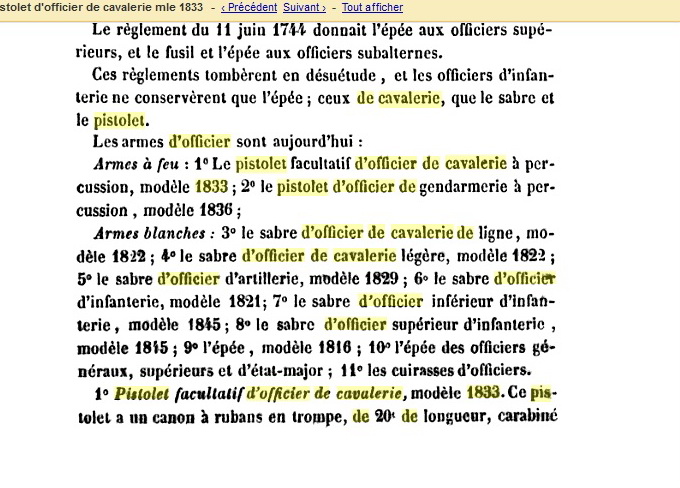
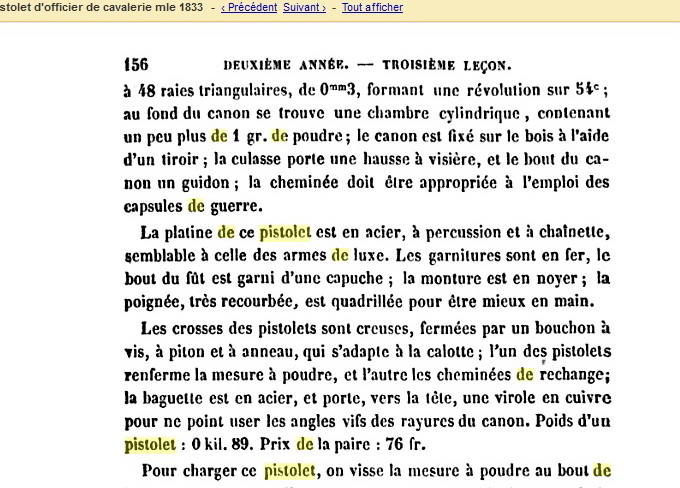
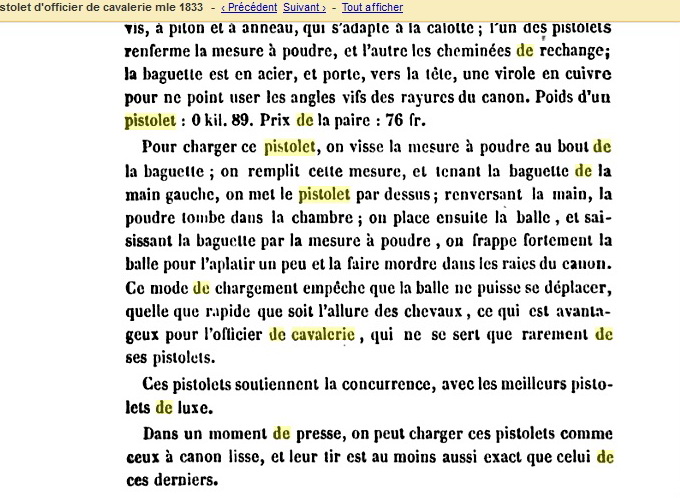
The following works by the same author have somewhat watered down the level of
numerical data on the 1833 (already poor).
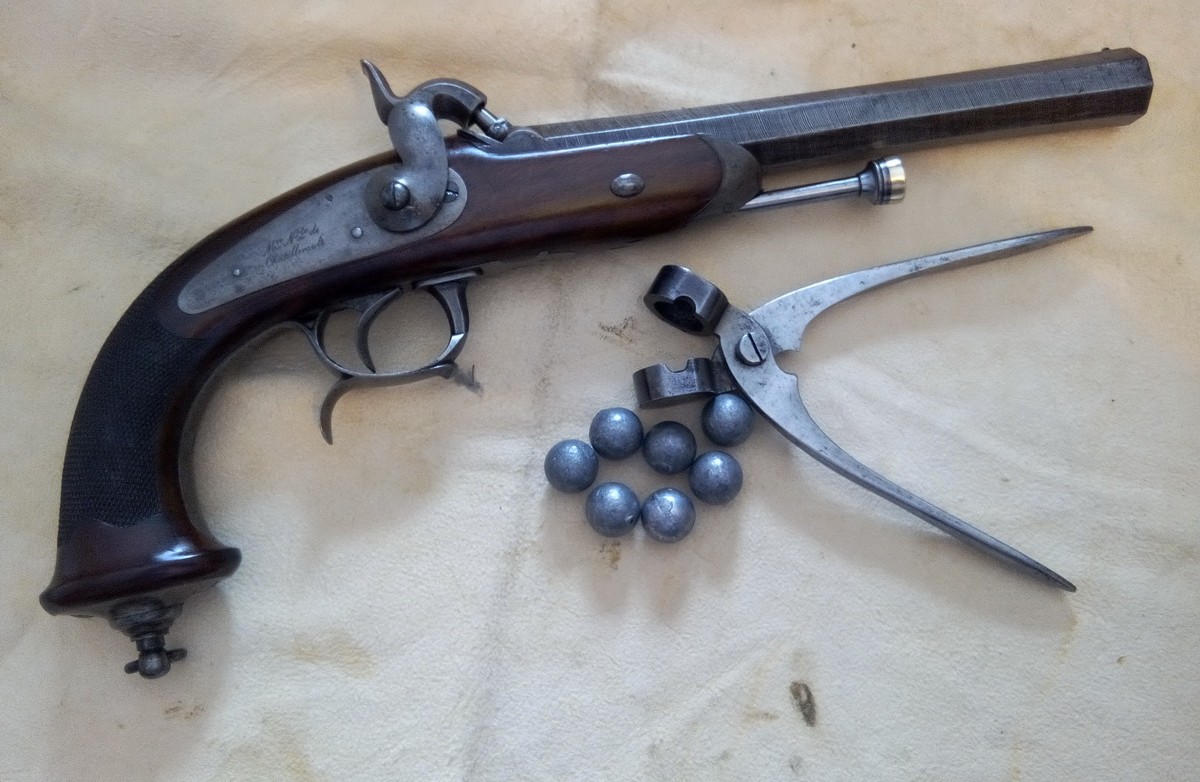
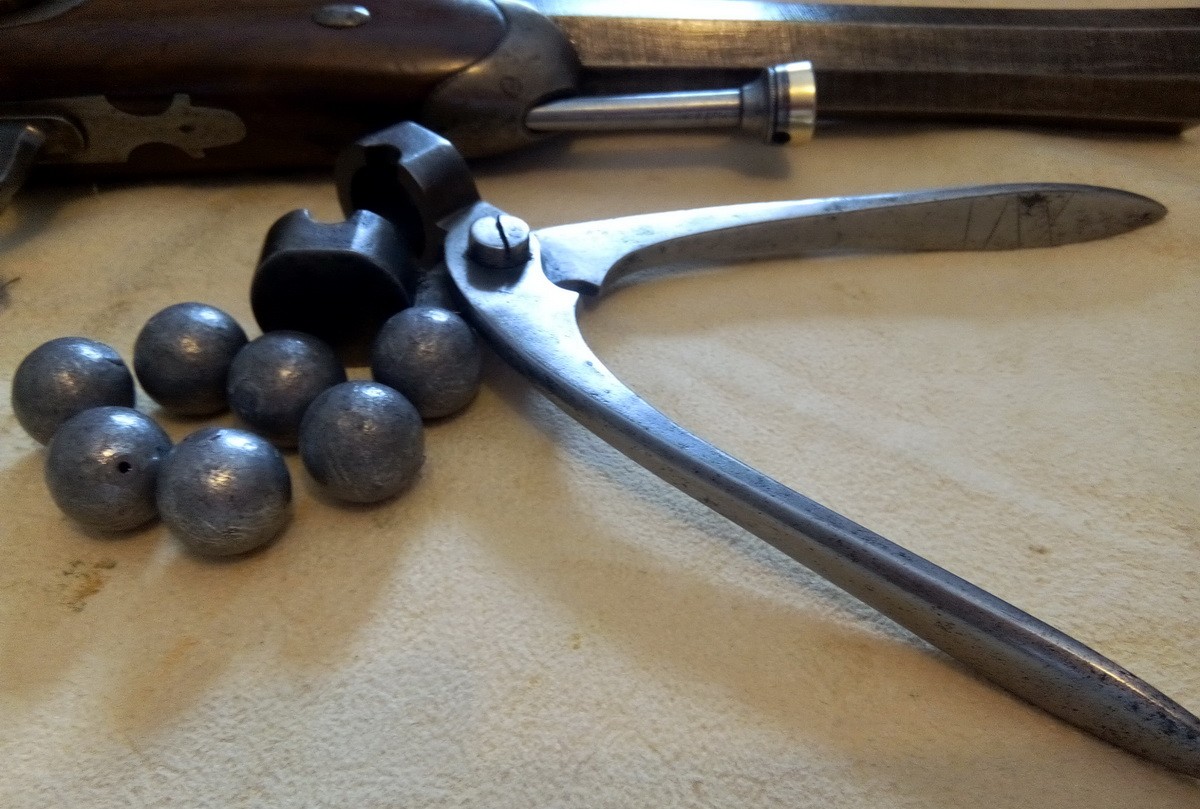
*** explanations of the old measures ref. WIKI ***
It was necessary in particular to distinguish between the pound of weight,
divided into 12 ounces (cf. libra), and the pound of weight of marc (1 marc = 8
ounces) which was worth 2 marcs, or 16 ounces (cf. mina).
Before the adoption of the metric system by the law of April 7, 1795, the
reference unit in France was the pound of Paris, pound of weight of marc which
was worth 489.5 g. It was divided into 16 ounces of 8 gros, each gros being
worth 72 grains. To convert Parisian or French pounds into kg, multiply the
number of pounds by 0.4895.
On February 12, 1812, the metric pound of 500 g was defined, among the
transitional customary units, in order to facilitate the transition from
traditional units of measurement to the metric system.
While the other so-called customary measures (abolished in 1839) were not
adopted by the people, the pound as a half-kilogram remains in the French
language to this day.
Enjoy reading
@Glt08